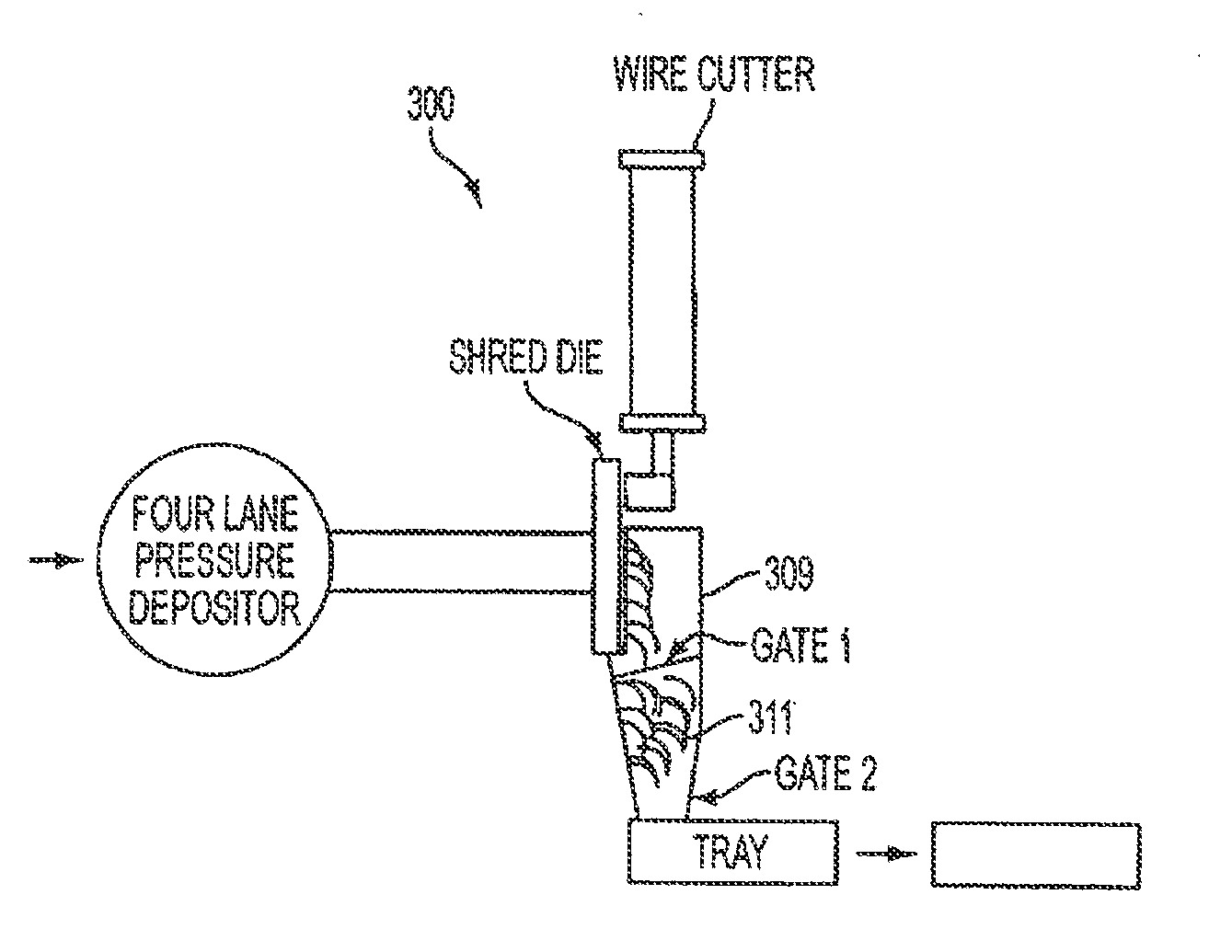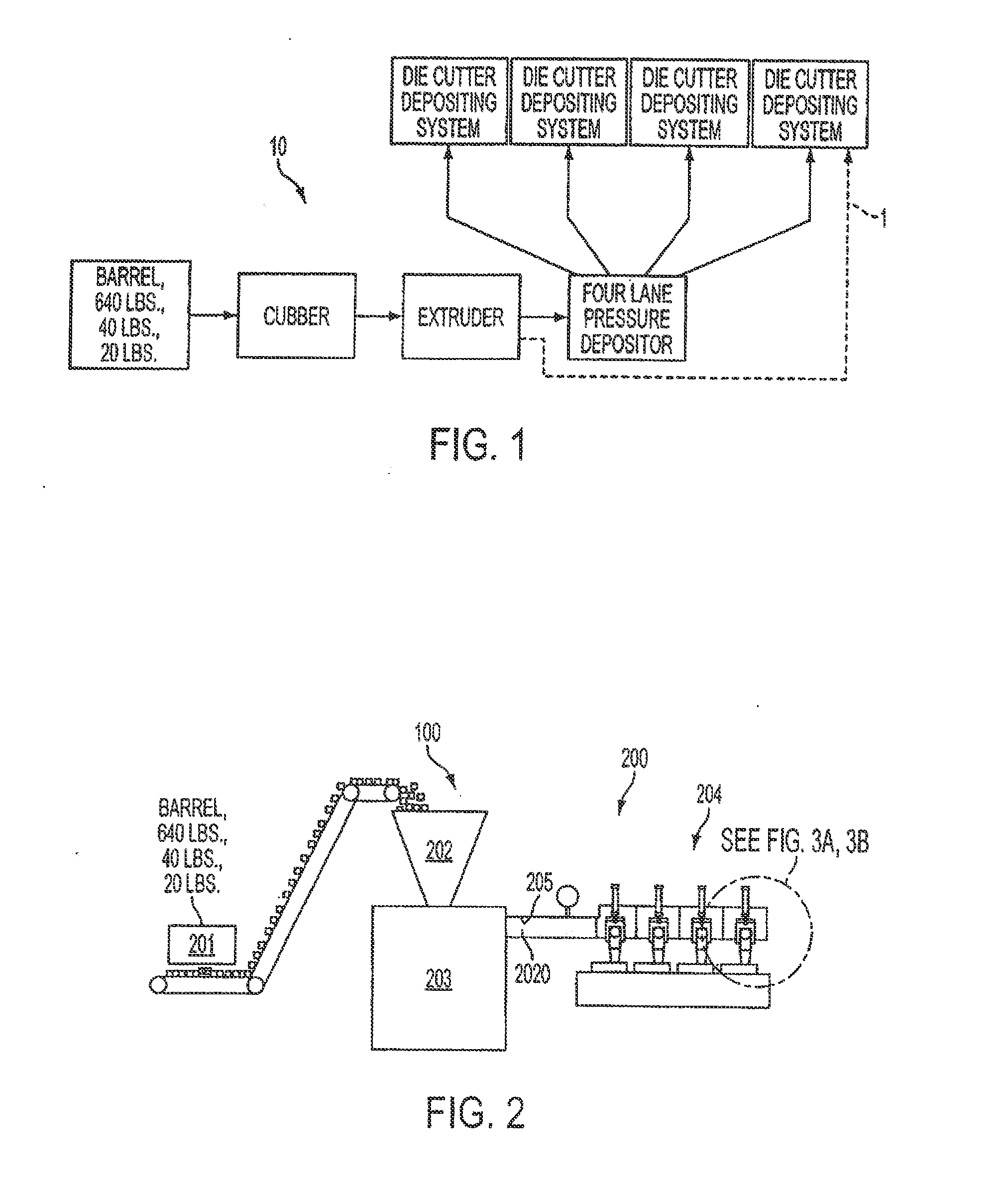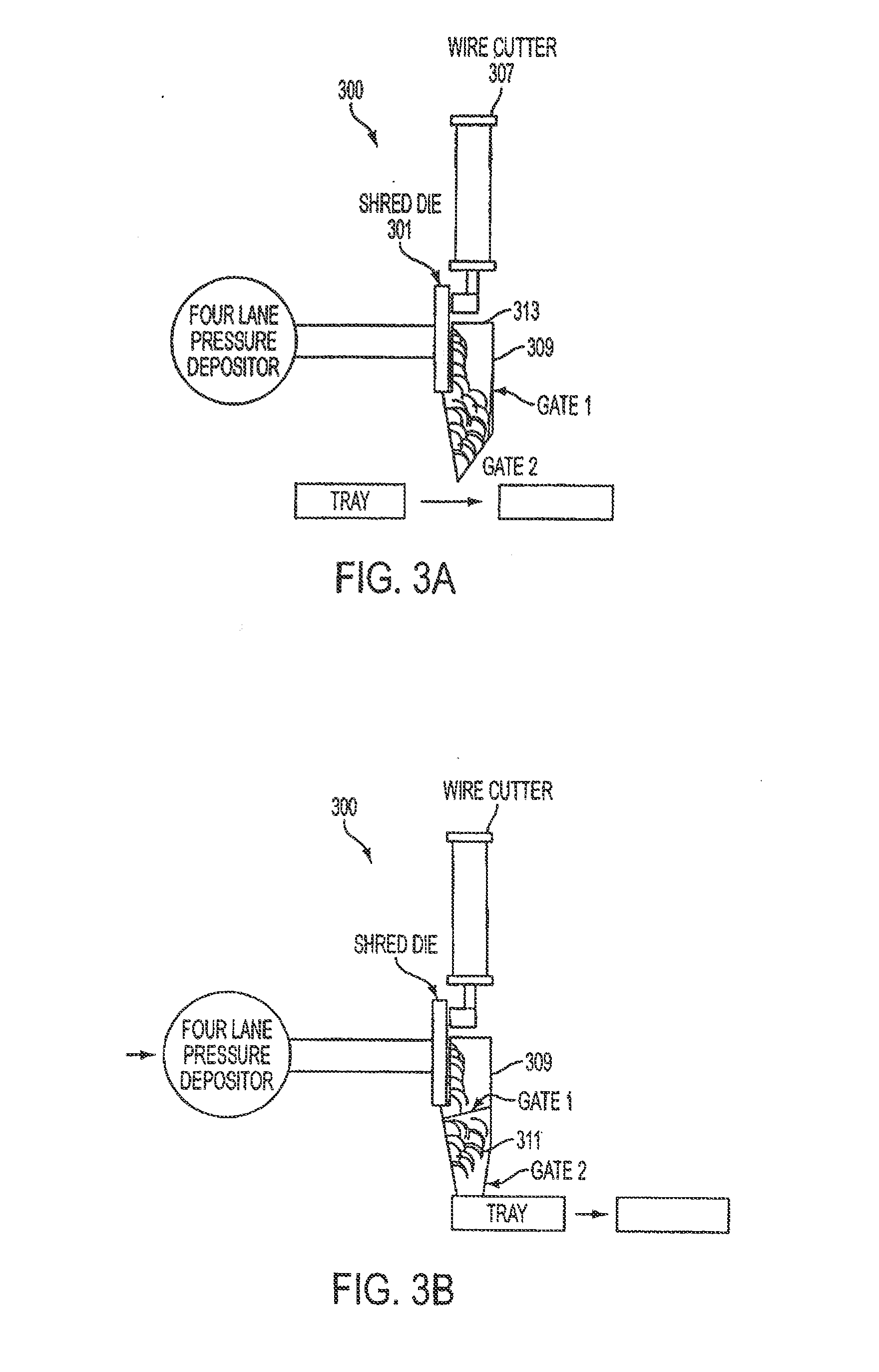Method and system for making extruded portions of cheese
a technology of cheese and extrusion, which is applied in the field of method and system for portioning shredded or sliced cheese, can solve the problems of difficult control of conventional shred sprinkling systems, such as vibratory belts, and achieve the effect of reducing packaging time and cost and minimizing handling
- Summary
- Abstract
- Description
- Claims
- Application Information
AI Technical Summary
Benefits of technology
Problems solved by technology
Method used
Image
Examples
example 1
[0080]Leprino brand mozzarella cheese (53% moisture) with starch was cut into 15.2 cm (6 inch)×7.6 cm (3 inch) pieces weighing approximately 0.5 lbs. The cheese temperature at the time of use was about 35° F. and was still about 35° F. after extrusion.
[0081]A customized die plate was fitted to an extrusion system, as described below. The die plate was molded rigid plastic construction having an 18 cm (7 inch) diameter and 0.95 cm (⅜ inch) in thickness. The plate had 117 orifices formed in it having almond-shapes, similar to that illustrated in FIG. 6, which were arranged in the die plate in the pattern illustrated in FIG. 4. The orifices extended through the entire thickness of the plate between its opposite exposed faces. The dimensions of the shred orifices were approximately 6.35 mm (0.250 inch) as the major diameter dimension extending laterally across the orifice by approximately 3.175 mm (0.125 inch) as the minor diameter dimension extending vertically across the orifice. The ...
example 2
[0083]A funnel 16 at the discharge of an outlet piping was used together with a reducer 20 at a pump outlet 22 to gradually transition between pipe sizes when making extruded cheese and was found to help maintain the cheese structure so that it closely resembled a processed, non-extruded cheese structure. This is illustrated in FIGS. 16A-D, which show microscopy results comparing the internal structures of processed cheese that had not been extruded versus extruded cheese using the funnel-reducer system. FIGS. 16A and B depict the control cheese, or processed, non-extruded cheese. FIG. 16A was magnified at a scale of 50 microns, and FIG. 16B was magnified at a scale of 20 microns. The cheese samples were tested using a nile blue staining technique which stained the fat particles in the cheese so that they were more visible when performing the microscopy testing. The fat particles in the non-extruded cheese appeared as droplets or round spheres with two sizes of fat populations of ei...
PUM
| Property | Measurement | Unit |
|---|---|---|
| temperature | aaaaa | aaaaa |
| diameter | aaaaa | aaaaa |
| diameter | aaaaa | aaaaa |
Abstract
Description
Claims
Application Information
 Login to View More
Login to View More - R&D
- Intellectual Property
- Life Sciences
- Materials
- Tech Scout
- Unparalleled Data Quality
- Higher Quality Content
- 60% Fewer Hallucinations
Browse by: Latest US Patents, China's latest patents, Technical Efficacy Thesaurus, Application Domain, Technology Topic, Popular Technical Reports.
© 2025 PatSnap. All rights reserved.Legal|Privacy policy|Modern Slavery Act Transparency Statement|Sitemap|About US| Contact US: help@patsnap.com



